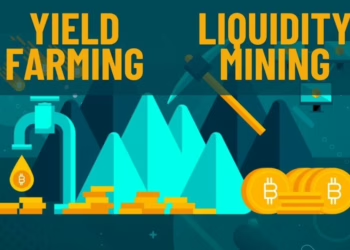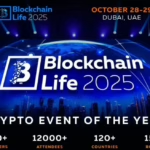The need for blockchain interoperability is growing in tandem with the demand for various blockchain-based Web 3 technologies. Cross-chain bridge services have made this feature readily available, allowing users to interact with multiple blockchains from a single point.
Immutable ledgers, secure databases, decentralized finance (DeFi), non-fungible tokens (NFTs), decentralized applications, and cryptocurrencies are just a few of the services made possible by blockchain technology.
Cross-chain bridges (also known as blockchain bridges) are becoming increasingly important for allowing different blockchain networks to interact and share information.
HydraDX is one of the few platforms that has effectively addressed the problems of crypto interoperability on various decentralized networks. The protocol permits cross-chain interaction and combines the advantages of many standalone DeFi networks.
This article comprehensively explores the HydraDX protocol, examining its features, architecture and use cases.
What is HydraDX?
HydraDX is a cross-chain decentralized liquidity protocol that aspires to become the perfect DEX to push decentralized finance into the mainstream. It was created to provide frictionless liquidity in the DeFi space by holding all assets in a common liquidity pool. HydraDX hopes to fix some of the problems with current decentralized exchanges, such as their high trading fees.
The platform is a substrate-based, permissionless, and open protocol on the Polkadot ecosystem. It is governed by a vibrant community of platform users, validators, and liquidity providers. As a result, HydraDX benefits from Polkadot’s excellent security, adaptability, and speed.
The protocol is backed by a native cryptocurrency called HDX, which is used to reward certain platform functions. Its supply fluctuates depending on how much money is locked up in the protocol.
Background of HydraDX
The protocol is being developed by the Galactic Council, a group of programmers focused on expanding on Substrate (the engine that drives the Polkadot ecosystem). The Galactic Council is a member of Zee Prime, a venture capital firm that invests in programmable assets.
Zee Prime’s portfolio comprises top projects like Hive, Polkadot, Crypkit, Deribit, Perpetual Protocol, Solana, and HydraDX. The protocol has the backing of several angel investors, including Hypersphere, Tenzor, CMS, and DFG.
Features of HydraDX
One of HydraDX’s key selling points is its ability to regulate transaction costs. High transaction fees are a major issue for cryptocurrency traders, especially when using DeFi platforms on blockchain networks like Ethereum. The existence of a decentralized exchange that addresses these issues would enhance the user experience and increase adoption.
Because of the order matching engine’s unique features and lower fees, traders can perform automatic trades without waiting for prices to fall in order to reduce transaction costs.
Additionally, HydraDX uses the LBP of the Balancer to generate the first liquidity. DEXs that use AMMs are crucial for DeFi, but they are ineffective due to high transaction costs and liquidity issues. The HydraDX team hopes to overcome these challenges and make the protocol the most important thing in the DeFi sector.
Another important aspect is the HydraDX protocol’s ability to provide liquidity with a single token contribution. Cryptocurrency owners typically need to stake a pair of crypto assets in a 1:1 ratio to participate as a liquidity provider. However, the HydraDX protocol’s features include the burning and minting of HDX to facilitate a balance of the available tokens. To provide liquidity, users can offer one token that will be matched with HDX.
Use Cases of HydraDX
HydraDX’s financial applications are numerous thanks to its cross-chain interoperability, speed, flexibility, and security. Among the most significant are:
- Trading digital assets across multiple blockchains.
- Users can provide liquidity and receive benefits.
- Users can create new liquidity pools for fresh tokens.
- In-wallet swaps are possible, and crypto storage can be linked directly to DEX aggregators.
- Developers may interface with blockchain-based assets such as Bitcoin (BTC), Polkadot (DOT), ERC-based tokens, and others.
- It serves as a benchmark when determining the price of one asset relative to another. Hence, it prevents price slippage and boosts capital efficiency. It should be noted that price slippage is one of the most serious issues affecting DeFi platforms that use traditional AMM features.
- It’s worth noting that HydraDX’s method allows LPs to provide single assets for liquidity. Because of HDX, the protocol can live up to its ocean-like name. The ocean’s size can change anytime, depending on its liquidity.
- HydraDX’s Omni-pool can expand and contract using the native currency in response to the “inflow and outflow of assets.” By doing this, the network improves execution while reducing liquidity scattering.
- HDX also functions as a staking token that, when stored in a wallet, enables owners to take part in discovering new blocks on a Proof-of-Stake blockchain. Holders of HDX also get lower over-collateralization ratios and cheaper trading costs when borrowing money from the network.
How HydraDX Works
The future of the financial sector is decentralized finance (DeFi). Since DeFi is still a nascent industry, inefficiencies do occur occasionally. Nevertheless, despite its challenges, DeFi is here to stay, so it’s critical to understand how the initial wave of decentralized exchanges (DEXs) operates. Understanding the fundamentals of a DEX will make you appreciate HydraDX’s innovations.
The order matching algorithm used by decentralized exchanges keeps track of all orders and compares them to new orders. DEXs use order books that are kept on-chain, and block data is updated every time an ask, or a bid occurs. Regrettably, order matching can be slow and ineffective, particularly on small exchanges with little supply and demand. Automated market makers (AMMs) solve these problems by acting as a go-between for traders and making purchases using an algorithmic price method.
Unfortunately, there are disadvantages to the AMM strategy, such as price slippage caused by the AMM’s algorithm, which raises transaction costs. When market price fluctuations are more pronounced, miners suffer exceptional losses. However, miners and validators could also benefit from the higher prices if they can make more rewards due to large orders.
Most decentralized exchanges employ fragmented liquidity pools made up of token pairs, which reduces liquidity and promotes higher costs. As a result of these difficulties, it is more difficult for the AMM to perform as planned. To avoid having several matched pools, HydraDX adopts an alternative strategy that entails having an “Omni-pool” for all assets.
To use the Omni-pool strategy, an underlying asset must be created and kept within the protocol. That asset, in this case, is HydraDX’s native token, HDX. The asset contributes 50% of the protocol’s liquidity, with the remaining 50% held in other assets provided by liquidity suppliers. The protocol’s pricing is based on HDX, making it easy to compare the prices of various assets. The strategy aids in reducing pool diversification.
Along with Omni-pool, the protocol also includes additional elements such as the order matching engine, which is connected to the AMM pool. The purpose of the matching engine is to make it possible to match bids and asks quickly and easily without having to join the liquidity pool. The fact that you can pay fees with tokens apart from HDX also makes the platform more useful and helps prevent slippage.
Highlights of HydraDX Ecosystem
HydraDX uses community-based governance, which implies that important decisions about the platform’s operations and future growth are made by its users.
Furthermore, the HDX token can be locked in a wallet and traded in exchange for other tokens. It is also an essential component of the protocol because it can be staked to aid with governance and liquidity. Aside from staking, owners also get a discount on transaction fees when they pay them with HDX.
Borrowers can use the HDX token to reduce their over-collateralization ratio. HydraDX platform users can earn incentives by adding their crypto assets to the liquidity pool. This protocol is one to watch out for because of its brilliant combination of scalability and incentive design.
How Can You Earn HDX?
The native token is used to compensate people who provide liquidity in the Omni-pool. This means you receive HDX tokens simply for being an LP. In addition to serving as a source of liquidity, the tokens can be purchased from the system and staked. Bounty hunters also receive HDX rewards for joining the network.
In Conclusion,
- Any DeFi platform will benefit significantly from the option to exchange any token for a modest fee and stake to generate passive revenue. It is encouraging to see that HydraDX’s new ideas solve many of the problems and inefficiencies that plague DEXs today.
- The protocol’s use of its native token enables it to quickly adjust to changes in pool liquidity. HDX also offers its holders extra benefits, including reduced trading costs and stake rewards.
- Decentralized governance is a logical component of a decentralized network. HydraDX’s use of Substrate and Polkadot is a clear sign that the platform wants to build a strong network capable of handling the present and future ups and downs of the DeFi ecosystem.
Disclaimer: This article is intended solely for informational purposes and should not be considered trading or investment advice. Nothing herein should be construed as financial, legal, or tax advice. Trading or investing in cryptocurrencies carries a considerable risk of financial loss. Always conduct due diligence.
If you would like to read more articles like this, visit DeFi Planet and follow us on Twitter, LinkedIn, Facebook, and Instagram.
“Take control of your crypto portfolio with MARKETS PRO, DeFi Planet’s suite of analytics tools.”




















